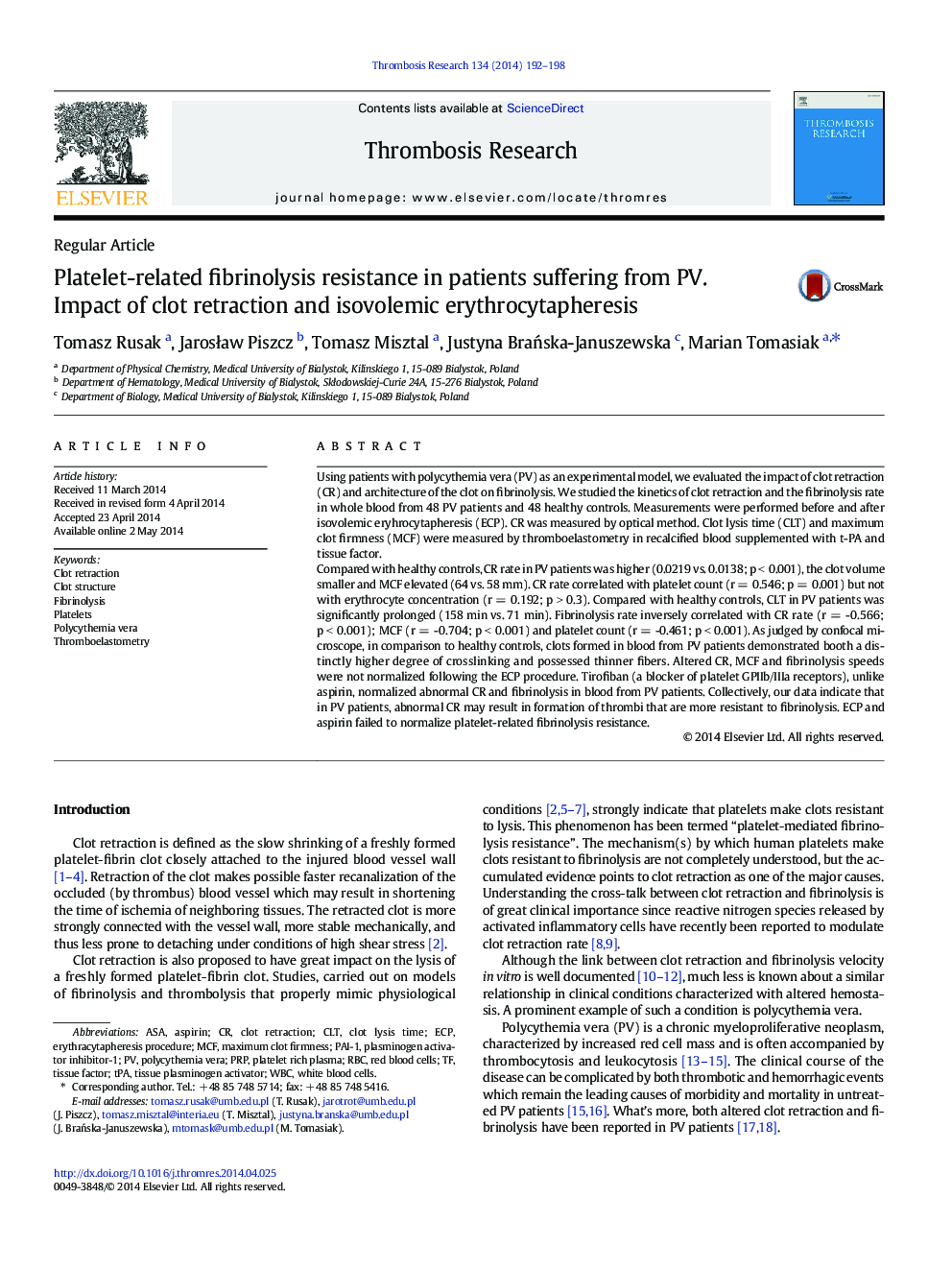| Article ID | Journal | Published Year | Pages | File Type |
|---|---|---|---|---|
| 6000879 | Thrombosis Research | 2014 | 7 Pages |
Using patients with polycythemia vera (PV) as an experimental model, we evaluated the impact of clot retraction (CR) and architecture of the clot on fibrinolysis. We studied the kinetics of clot retraction and the fibrinolysis rate in whole blood from 48 PV patients and 48 healthy controls. Measurements were performed before and after isovolemic eryhrocytapheresis (ECP). CR was measured by optical method. Clot lysis time (CLT) and maximum clot firmness (MCF) were measured by thromboelastometry in recalcified blood supplemented with t-PA and tissue factor.Compared with healthy controls, CR rate in PV patients was higher (0.0219 vs. 0.0138; p < 0.001), the clot volume smaller and MCF elevated (64 vs. 58 mm). CR rate correlated with platelet count (r = 0.546; p = 0.001) but not with erythrocyte concentration (r = 0.192; p > 0.3). Compared with healthy controls, CLT in PV patients was significantly prolonged (158 min vs. 71 min). Fibrinolysis rate inversely correlated with CR rate (r = -0.566; p < 0.001); MCF (r = -0.704; p < 0.001) and platelet count (r = -0.461; p < 0.001). As judged by confocal microscope, in comparison to healthy controls, clots formed in blood from PV patients demonstrated booth a distinctly higher degree of crosslinking and possessed thinner fibers. Altered CR, MCF and fibrinolysis speeds were not normalized following the ECP procedure. Tirofiban (a blocker of platelet GPIIb/IIIa receptors), unlike aspirin, normalized abnormal CR and fibrinolysis in blood from PV patients. Collectively, our data indicate that in PV patients, abnormal CR may result in formation of thrombi that are more resistant to fibrinolysis. ECP and aspirin failed to normalize platelet-related fibrinolysis resistance.
